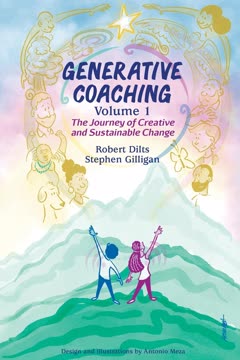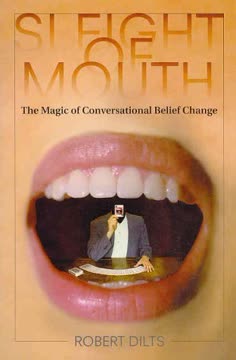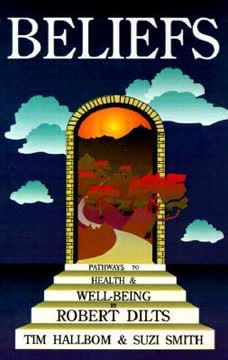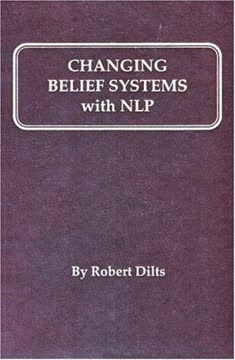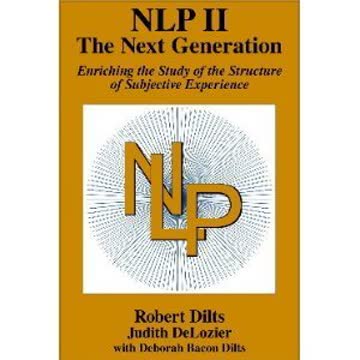Key Takeaways
1. Generative Change: Creativity as Deep Transformation
Generativity is creativity in which you are making something completely new that has not existed before; i.e., “stepping out onto new ground” and where “your destination is not yet clear” as the poem describes.
Profound change. Generative Change is a unique form of creativity focused on bringing something entirely new into existence, rather than merely reorganizing or incrementally improving existing structures. It addresses situations where past solutions are no longer effective, demanding a deep, foundational shift in approach. This profound change is crucial for individual, organizational, and societal growth, especially during times of crisis, rapid expansion, or significant transition.
Beyond superficiality. Unlike superficial adjustments, generative change delves into the deep structure of a system, challenging the very foundations of what is being done and where it is headed. It moves beyond "rearranging the deck chairs on the Titanic" to address core issues that impact fundamental growth and survival. This approach is vital when existing patterns no longer serve, requiring a leap into the unknown to create novel outcomes.
Three branches. Generative Change encompasses three distinct yet interconnected tracks:
- Generative Trance: Focuses on inner healing and transformation through accessing the creative unconscious.
- Generative Coaching: Applies principles to personal development, life coaching, and executive coaching, grounding new creations in the classical world.
- Generative Change in Business: Applies principles to entrepreneurs, companies, organizations, and leadership for systemic evolution.
All three share a common deep structure, emphasizing creativity as the heart and soul of reality construction.
2. The COACH State: Foundation for All Generative Work
When held mindfully with creative flow, solutions and new learnings are possible.
Mindful presence. The COACH state is the essential foundation for all generative work, representing a mindful, open, and resourceful state of being. It contrasts sharply with the CRASH state (Contracted, Reactive, Analysis paralysis, Separated, Hostile/Hurting/Hating), which locks individuals into limited, survival-based responses. Cultivating the COACH state allows for creative flow, enabling individuals to perceive infinite possibilities and respond resourcefully to challenges.
Key elements: The COACH acronym outlines the core components of this vital state:
- Centered: Grounded in your body, beneath the verbal, cognitive mind.
- Open: Open in mind and heart to a bigger space of possibilities.
- Aware: Awake and present to yourself and others, with nuanced self-awareness.
- Connected: To inner resources, others, and the environment.
- Holding: Embracing whatever arises with hospitality, curiosity, and resourcefulness.
This state allows for equanimity, maintaining presence and resourcefulness regardless of emotional content.
Filter transformation. The COACH state acts as a filter through which reality is perceived and expressed. When filters are held mindfully, even challenging emotions like fear or anger can transform into resources (e.g., fear into heightened awareness, anger into decisive action). Conversely, a CRASH state will distort these energies into problems. The goal is to maintain a COACH state, typically at least 7 out of 10 on a self-scaling measure, to ensure creative capacity and resilience.
3. Setting Intentions: Direction Over Destination
An intention is just an empty wish until it is in the muscle.
Purposeful direction. Step two of Generative Coaching focuses on setting a clear, positive intention, which acts as a compass guiding creative consciousness toward a meaningful future. Unlike rigid goals, intentions provide a direction, even when the exact destination remains unclear, allowing for generativity and emergent possibilities. This step taps into a client's deepest longings and visions for a better life, moving beyond mere problem-solving to active creation.
Not too tight, not too loose. An effective intention strikes a balance: specific enough to engage creative action, yet open enough to embrace unforeseen possibilities. Overly specific goals, like SMART goals in traditional coaching, can stifle creativity, while overly vague intentions lack direction. The aim is a "shimmering" intention—definite in shape but flexible in form—allowing for disciplined flow.
Three-part expression. To make an intention actionable and deeply integrated, it must be expressed through three modalities:
- Verbal statement: Positive, succinct (max five words), and resonant in the body.
- Visual image: A color image, either literal or symbolic, that accompanies the words.
- Somatic model: A posture, gesture, or movement that embodies the intention.
This multi-modal approach ensures the intention is not just an intellectual concept but is felt, seen, and embodied, making it a powerful catalyst for change.
4. Establishing a Generative State: The Three Positive Connections
When you can truly and strongly hold these three connections simultaneously, new thoughts and ideas will begin to emerge naturally and spontaneously.
Optimal performance. Step three is about establishing a high-quality creative performance state by simultaneously holding three crucial connections. This state is designed to sustain creative consciousness at optimal levels, ensuring focus, centeredness, and access to vital resources as one moves towards their intention. It's the engine that drives the generative process, allowing new ideas to emerge organically.
The three connections:
- To yourself and your deepest somatic center (source): Grounding in your core presence and commitment.
- To the intention: Maintaining a clear, multi-modal connection to what you want to create.
- To your field of positive resources: Tapping into supportive influences like mentors, family, nature, or spiritual beings.
These connections create a powerful field from which generativity naturally flows, enabling insights and actions that transcend conscious effort.
Sustained balance. Maintaining these three connections requires continuous monitoring and adjustment, often using self-scaling (0-10) to ensure each connection remains at an optimal level (at least 7 out of 10). If any connection weakens, the generative state diminishes, impacting performance. The coach's role is to help the client balance these forces, much like aiming a bow and arrow—one hand focused on the target (intention), the other grounded in the self (center), supported by the quiver of resources.
5. Moving to Action: Imagineering and Storyboarding Your Path
A goal is a dream on a timeline.
Translating dreams. Step four focuses on translating the established intention into concrete action, bridging the gap between the quantum field of possibilities and classical reality. This involves developing and actualizing plans, using feedback to refine the path. The core challenge is to create a path that is both clear and flexible, allowing for disciplined movement while remaining open to unanticipated opportunities.
Imagineering success. Walt Disney's "imagineering" process provides a powerful framework, coordinating three essential subprocesses:
- Dreamer: Generates new ideas and the overall vision.
- Realist: Translates ideas into concrete, actionable steps.
- Critic: Evaluates, refines, and ensures the plan is effective and ecological.
Effective imagineering requires balancing these roles; a dreamer without a realist and critic remains just a dreamer, while a realist and critic without a dreamer become a bureaucracy.
Storyboarding the journey. Storyboarding, another Disney innovation, is used to define the sequence of key actions. Clients physically walk a "timeline" on the floor, identifying 5-7 major steps from present to desired state. Each step is explored using images, words, and somatic models, engaging the creative unconscious. This process is then "chunked down" into increasingly specific actions, ensuring the plan is both comprehensive and embodied, transforming abstract goals into tangible, sequential movements.
6. Transforming Obstacles: Welcoming Generative Complementarities
Any particular content (i.e., emotion, behavior, symptom, relationship, situation, etc.) can be positive or negative, helpful or unhelpful, good or bad, useful or problematic depending upon the state of your filters and the relationship you have with that content.
Obstacles as resources. Step five redefines obstacles not as problems to be eliminated, but as integral parts of the creative process, often representing attempts to bring balance and wholeness to a system. The generative approach, inspired by Milton Erickson and Aikido, emphasizes welcoming these interferences. The core idea is that seemingly negative experiences, at their heart, are competencies or resources distorted by a CRASH state, waiting to be transformed into positive contributions.
Creative non-violence. Instead of fighting or resisting obstacles, Generative Coaching advocates for a "creative non-violence" approach. This involves meeting the obstacle with a welcoming presence, curiosity, and a COACH state. When an archetypal energy (like the need for rest) is met with a mindful, positive filter, it can express itself as a creative resource rather than a symptom like chronic fatigue or narcolepsy. The relationship to the obstacle determines its expression.
Reconciling opposites. Obstacles often represent one side of a generative complementarity (e.g., work vs. rest, commitment vs. self-care). The process involves:
- Identifying the "X but Y" conflict.
- Tuning into both X (intention) and Y (obstacle) with positive connection and self-scaling to ensure balance.
- Moving attention between them to create resonance, recognizing them as complementary aspects of the same resource.
- Using somatic models to embody and integrate these parts, transforming rigid conflicts into fluid, rhythmic movements, much like the Yin and Yang.
7. Sustaining Change: The Power of Consistent Practices
You are what you practice.
Embedding change. Step six is crucial for embedding the changes initiated in the coaching session into the client's daily life. A session merely opens a possibility; consistent practice transforms that potential into an ongoing, concrete reality. Just as athletes practice extensively, clients must commit to daily practices to integrate new competencies and make them their new baseline.
Three types of practices:
- Preparation practices: Help clients be ready to express their intention in new situations (e.g., mental rehearsal, self-anchoring, increasing motivation).
- Reflection practices: Deepen learning by increasing awareness and understanding of factors supporting their intention (e.g., daily diaries, the "choice generator" for exploring alternative responses).
- Sustaining practices: Strengthen changes and install the intention as a new baseline (e.g., daily self-care routines like walks or yoga, gratitude rituals).
These practices are collaboratively generated, empowering clients to become their own self-coaches.
High leverage, self-care. Effective practices are "high leverage," delivering disproportionate cumulative benefits for a relatively short daily investment (e.g., a 30-minute morning run doubling daily productivity). Crucially, self-care practices are paramount; they are "just for you," not for work or family. Neglecting self-care often leads the unconscious to find distorted ways to achieve balance, manifesting as negative habits or symptoms. Prioritizing self-care ensures the individual remains alert, resourceful, and capable of serving others.
8. The Relational Field: Coach-Client Connection is Key
If the field holding the interaction is in CRASH, then whatever you think makes no difference, whatever you say makes no difference and whatever you do makes no difference.
Shared resonance. The quality of the relational field between the coach and client is the ultimate determinant of generative outcomes. It's not merely about the tools or knowledge applied, but the shared state of resonance where creative ideas can emerge effortlessly. When both coach and client are in a COACH state, a powerful "we" field is created, allowing for insights and transformations that transcend individual limitations.
Beyond individual maps. A generative coach actively cultivates this field by mirroring client gestures, acknowledging internal experiences, and sharing their own resonant feelings. This prevents the client from becoming isolated in their personal map of the world, fostering a deeper connection to the generative potential within the coaching relationship. The coach functions as a midwife, accompanying the client as something new tries to awaken or be born.
Impact of state. The same coaching tools and techniques yield vastly different results depending on the underlying relational field. In a CRASH field, even the most brilliant interventions fall flat, as the contracted, reactive state blocks genuine engagement. Conversely, within a COACH field, every thought, word, and action becomes imbued with transformative power, facilitating magic and profound change. This underscores the paramount importance of establishing and maintaining a high-quality relational container.
9. Somatic Intelligence: Embodied Change is Lasting Change
Knowledge is only a rumor until it is in the muscle.
Body as wisdom. Generative Coaching places immense importance on engaging the body and somatic intelligence, recognizing that true, lasting change is almost impossible without it. The body holds a profound wisdom, often knowing how to bring something new into the world far better than the cognitive mind. By involving physical gestures, movements, and sensations, clients can access deeper levels of their being and integrate changes more effectively.
Beyond words. While verbal articulation is important, relying solely on words often keeps intentions and insights confined to the intellectual realm, disconnected from emotions and actions. Somatic models—postures, gestures, and movements—provide a direct pathway to embody intentions and transform obstacles. For example, a client's physical expression of "finishing a book" might reveal a CRASH state (clenched fists, furrowed brow), which can then be consciously shifted to a COACH expression (relaxed posture, open hands).
Deep integration. Somatic engagement helps to "get it in the muscle," transforming abstract concepts into lived experiences. This is evident in practices like walking a physical timeline for storyboarding or using rhythmic movements to reconcile conflicting parts. When the body is actively involved, the change becomes more profound, spontaneous, and resilient, making it an integral part of the client's nervous system and everyday reality.
10. Embracing Complementarities: The Yin and Yang of Growth
For every action, there’s an equal and opposite reaction. And the same thing is true psychologically. For every goal, there are going to be equal and opposite obstacles.
Dynamic balance. Creativity and growth are inherently a conversation between complementary perspectives and energies, much like the Taoist Yin and Yang. Every intention or "action" naturally evokes an "equal and opposite reaction" in the form of obstacles or counter-forces. These are not inherently negative but are the system's attempt to maintain balance and wholeness. True generativity arises from embracing and integrating both sides, rather than suppressing one.
Beyond polarization. When one side of a complementarity is rigidly valued (e.g., "always be productive") and the other suppressed (e.g., "rest is lazy"), it creates an escalating polarization and a CRASH state. The "symptom" (e.g., chronic fatigue) then becomes the unconscious's distorted attempt at a "solution" to restore balance. Generative Coaching seeks to move beyond this "either-or" thinking to a "both-and" approach, recognizing that both sides are essential for a complete, healthy system.
Integrated rhythm. The process involves welcoming both sides of a complementarity, identifying their positive intentions, and then finding a new, integrated expression that incorporates both. This often manifests as a fluid, rhythmic movement or a new metaphor that transcends the original conflict. By holding these seemingly opposite energies simultaneously within a COACH field, a spectrum of new possibilities emerges, allowing for continuous, unbroken attention and a more profound, holistic evolution of the self.
Last updated:
Review Summary
Download PDF
Download EPUB
.epub digital book format is ideal for reading ebooks on phones, tablets, and e-readers.
